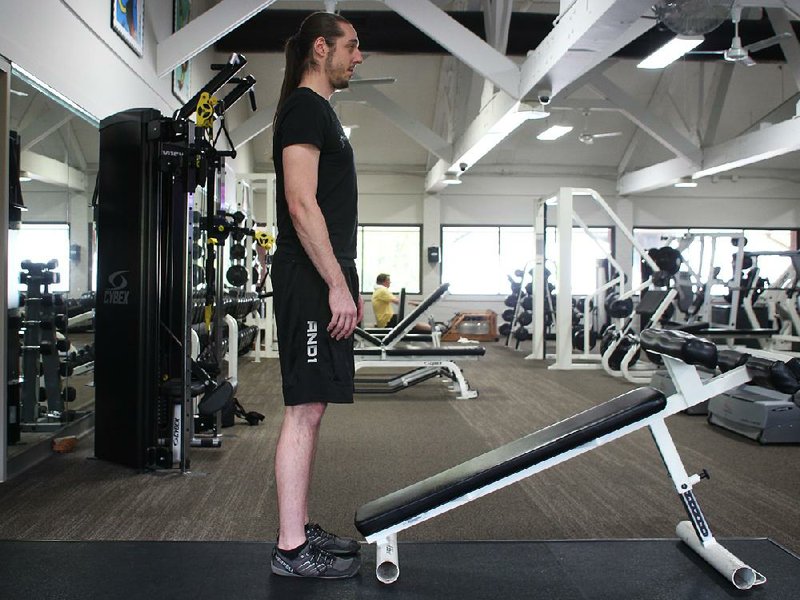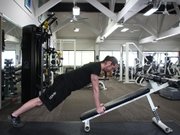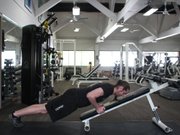When I'm organizing a strength-training program, I like to include what I call "transitional exercises." These movements are easy to perform, require little equipment and keep the heart rate raised while other muscle groups recover before the next set.
This week, I'll help you understand how and when to use transitional exercises in your routine. Plus, I'll introduce one of my favorites.
Most strength programs call for doing a set of eight to 12 repetitions followed by a rest period, and then another set, another rest period and so on. Don't get me wrong; this is definitely the textbook way to perform strength training and is supported by all sorts of research. The only trouble is, this format doesn't burn many calories, and it doesn't do much for cardiovascular endurance because the heart rate remains relatively low.
Transitional exercises solve this problem. Instead of recovering by sitting still, the exerciser allows target muscles to recover "actively" while they perform a different, lower intensity movement.
For example, most people need a long recovery period between sets of barbell squats. It's a demanding exercise that involves large muscle groups, so people naturally need to give their legs a chance to recover. A pushup makes a perfect transitional exercise. It gives the legs rest while addressing other parts of the body.
To optimize the benefit of transitional exercises, I select movements that involve muscle groups that have already been put to work earlier in the workout. In the example above, the pushup would be a great addition if the chest and triceps had been fatigued before the set of squats. The pushup would build upon the existing work that had already been done -- while allowing the legs to recover.
Transitional exercises can also be used in compound sets that build upon the previous exercise. Using this format, the exerciser would perform several exercises for the same muscle group back-to-back with no rest. For advanced exercisers, this is an excellent way to achieve muscle fatigue in well trained muscles without lifting large amounts of weight.
This week's exercise is a fun transitional option that I often use as part of the compound-set format described above. The Close Grip Pushup on Decline Bench is an easy way to maximize fatigue during chest and triceps workouts.
1. Find a decline bench and adjust it to the most extreme decline possible. This is usually about 45 degrees.
2. Stand facing the bench with the low end nearest to you. Place your hands on the sides of the bench at the lowest possible point (where your head would be during a decline situp). Step back and get into the "up" phase of a pushup.
3. Lower your torso by bending the elbows and keeping them close to your sides. This will force the shoulders and triceps to activate.
4. Lower until your face nearly touches the bench, then press back up and fully extend both arms.
5. Do 12 repetitions very slowly and deliberately for a great upper body burn.
This exercise is not for those with shoulder problems. The close grip will require the anterior portion of the shoulder to handle a fair amount of force. So be mindful of this if you've had a history of shoulder pain or injury. Otherwise, enjoy!
Matt Parrott has a doctorate in education (sport studies) and a master's in kinesiology and is certified by the American College of Sports Medicine.
ActiveStyle on 04/25/2016



